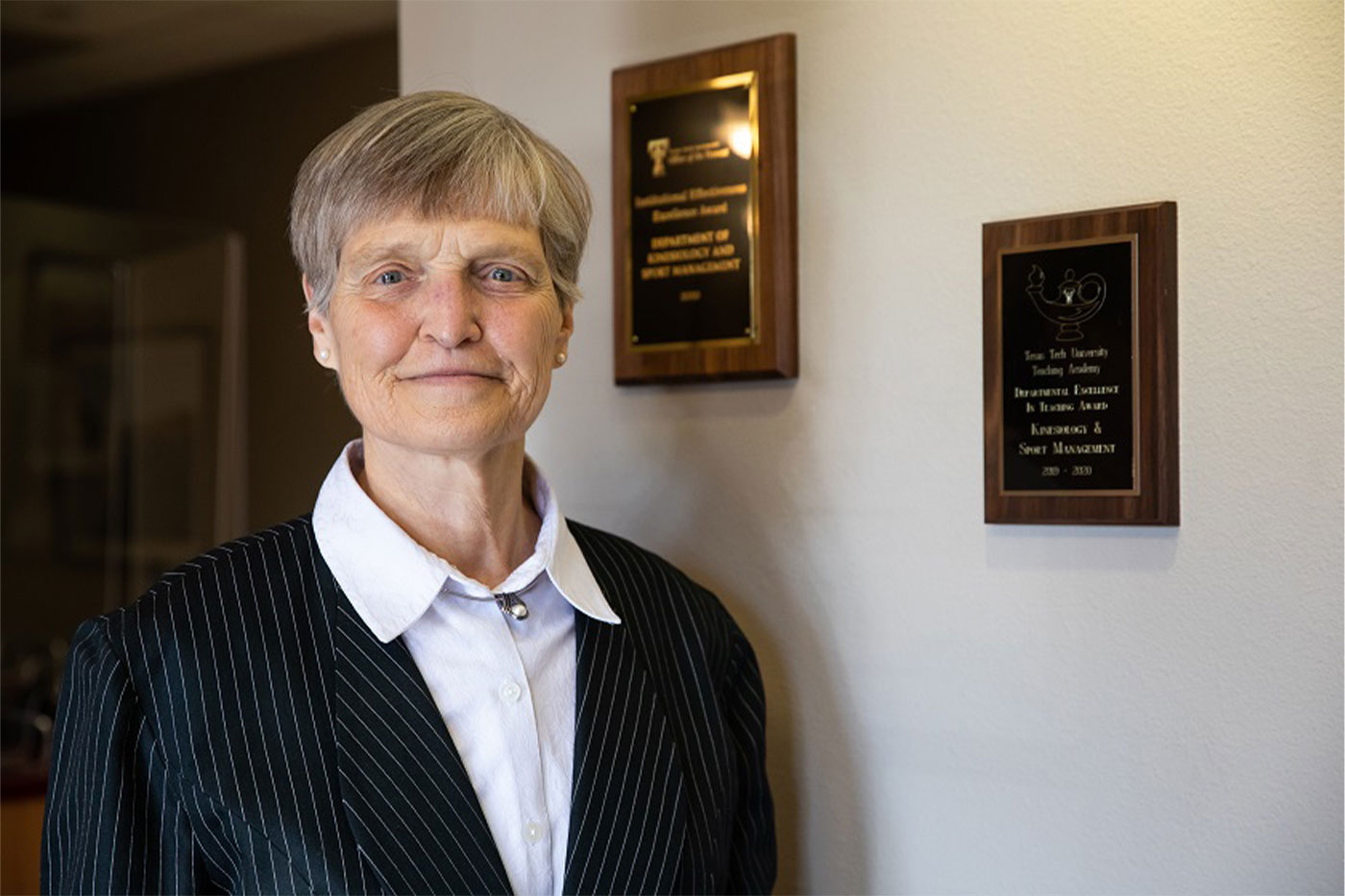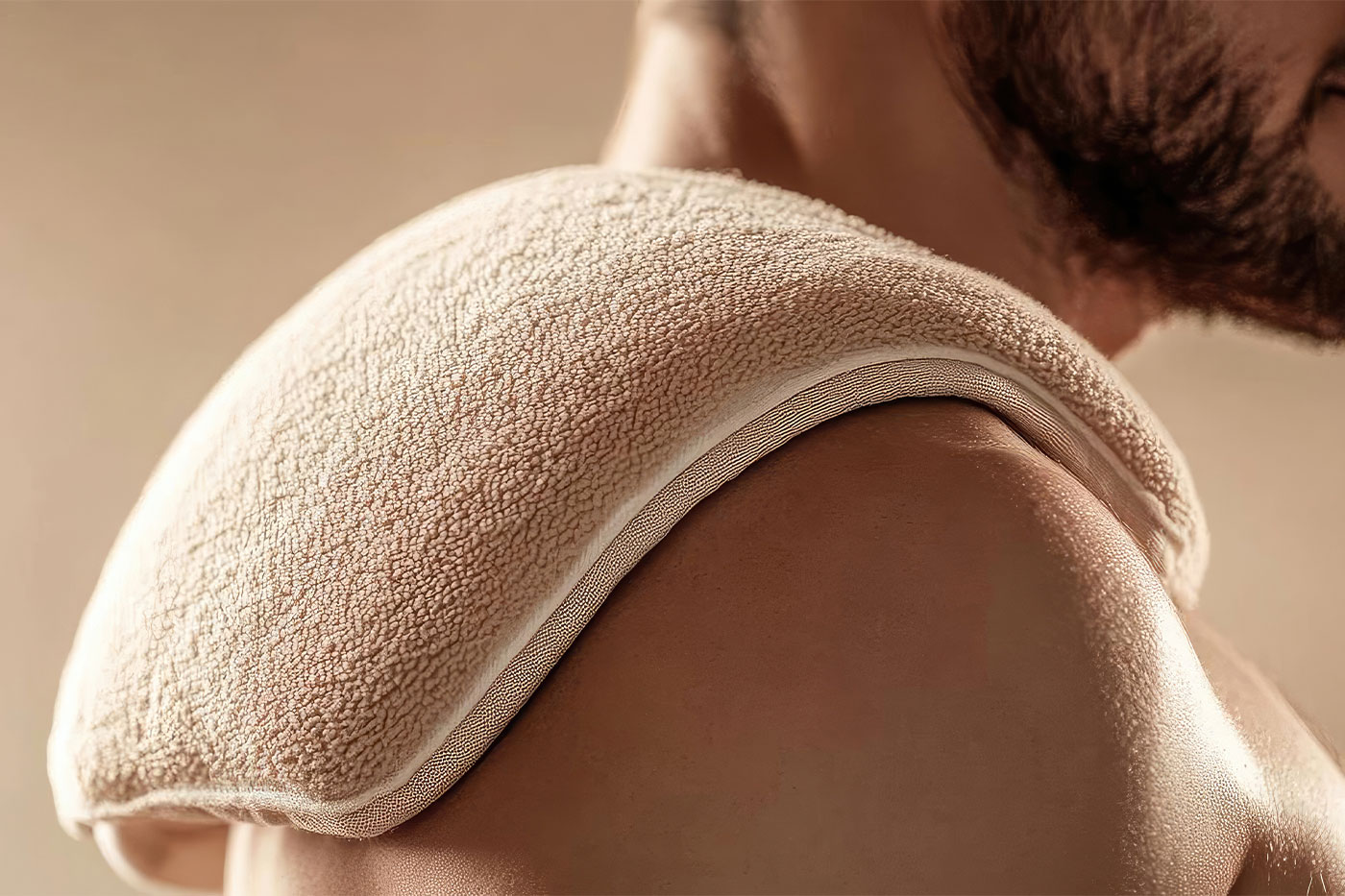The clinical trial will study the effects of heat therapy on the muscle structure of older adults with prediabetes and corresponding health outcomes.
Skeletal muscle is a key component to whole-body health. The bundles of muscle fibers connected to bones, beyond their primary function of contraction, contribute significantly to controlling body temperature, maintaining posture, and metabolic health.
Danielle Levitt, a Texas Tech University assistant professor of kinesiology, views skeletal muscle as an adaptable, valuable organ with an integral role in everyday life. She and long-time colleague and friend Hui Ying Luk, another assistant professor of kinesiology, seek to maintain the vitality of skeletal muscles even into old age.
The two faculty in the Department of Kinesiology & Sport Management will study the effects of heat therapy on older prediabetic adults, thanks to a five-year grant of roughly $3.5 million administered by the National Institutes of Health (NIH) but funded by the National Institute on Aging (NIA).
Under the auspices of the Stephen I. Katz Early Stage Investigator Research Project Grant, not only are Levitt and Luk complying with the stipulations of researching a topic apart from their past focuses, they’re also tapping into a subject largely overlooked by the scientific field.
“I feel that skeletal muscle has been underrepresented in biomedical literature as a target organ to improve whole-body health, metabolic health, and frailty,” Levitt said.

With aging and the onset of Type 2 diabetes, skeletal muscle becomes less responsive to stimulation by insulin and thus decreases in mass and quality, impairing the body’s ability to maintain its blood sugar levels (glycemic control). Losses in skeletal muscle mass, known as sarcopenia, increase the risk of frailty by impairing function.
Frailty-related medical expenses in the U.S. cost $18 billion annually, as between 7% and 15% of older adults not living in a long-term care facility meet the criteria for frailty. Roughly 40% of those people are prediabetic.
Glycemic control and muscle quality can be improved by exercise training such as high-intensity interval training, which can improve critical aspects of skeletal muscle structure. Those include the process of forming small vessels that move blood to and from muscles (capillarization) and the function of mitochondria, which generate energy in addition to other purposes.
Older adults and those who are prediabetic can find participating in such exercise methods difficult.
“A lot of the time, the literature will say, ‘Oh, they just cannot adapt,’” Luk said. “But is that true? Or is it because with the diseased state, there are certain changes in the intramuscular structure that prevent them from getting the benefit from exercise?”

That’s why the research partners are turning to a traditional form of treatment to get adults more comfortable with exercise.
They surmise the use of heat therapy could result in significant advancements in health outcomes besides improving muscle structure and reducing frailty risk, such as decreasing the risk for Type 2 diabetes altogether.
“Data generated will provide evidence supporting a directly translatable, easily implemented therapeutic intervention to ameliorate risk of developing overt Type 2 diabetes and frailty in at-risk aging individuals,” their project narrative reads.
The hope is the study’s results put more weight behind the principle that lifestyle changes significantly improve quality of life by providing benefits to the whole body.
Though Levitt and Luk have both participated in numerous research experiences, the NIH’s R01 grant marks the first large project and is a high bar to clear for younger researchers and assistant professors.
While Luk called the achievement “validating,” they have most enjoyed seeing their growth since starting at Texas Tech and working with a friend again to submit a successful proposal.
Levitt said receiving the grant meant the world to her, and she was grateful to the NIA for entrusting the pair with the project.
“I describe the R01 as the holy grail of research grants,” she said.
“This was something that I was thinking would take a longer path to achieve. My goal was always to get a R01 eventually, but I thought there would be more steps in between.”
Angela Lumpkin, Kinesiology & Sport Management chair, said the achievement was a huge feather in their cap as the application process was rigorous and assistant professors rarely receive R01 grants. She attributed Levitt and Luk’s success to their confidence, commitment to research, and work ethic.

“People don’t walk into your office one day and offer your money, because this is somebody else’s money and, in this case, it’s the federal government’s,” said Lumpkin. “There’s an accountability to that. So, they’re just young, go-getter faculty members who did what it took to get a very good proposal approved very highly at the NIH level.”
The grant’s dollar amount also is unprecedented for Kinesiology & Sport Management research.
The pair aims to study 54 subjects in three groups of 18 participants each, of which one will just experience 12 weeks of exercise training and the other two will undergo 12 weeks of heat therapy in addition to the training, with one of those latter groups receiving a placebo heat pad.
“During this time, we’ll collect muscle samples, we’ll collect questionnaires to assess their energy level, sleep quality, and physical function testing performance,” said Luk.
Luk will oversee the clinical arm of the study and Levitt will facilitate the cell and molecule arm, involving the collection and analysis of samples.
Prior to receiving the Katz grant, Levitt researched alcohol, metabolic health and skeletal muscle physiology, whereas Luk looked at skeletal muscle adaptations and muscle regeneration and recovery from exercise.
Aging is also a topic the two have studied recently, since the process also affects muscle in addition to diabetes or the use of alcohol.
“Ultimately, if regeneration is not happening, then it will affect people’s ability to do daily activities and also their ability to regulate their whole-body metabolism,” said Luk.
Though not entirely familiar with heat therapy, Luk recalled the concept’s presence in their childhood as a method to treat pain.
As they dove into more literature written about heat therapy, they discovered the method also provided benefits at the cellular level by improving mitochondrial health and that of capillaries as well.
Repeated exposure to whole-body heat has been used to treat musculoskeletal pain for millennia, improving capillarization, glycemic control and mitochondrial biogenesis, or the process of cells generating new mitochondria. Local heat therapy, or heat applied to specific areas, is similarly effective.

Both promote the flow of calcium ions through transient receptor potential vanilloid receptor 1 (TRPV1) channels in neurons, and those ions further stimulate mitochondrial biogenesis and glucose disposal by acting as intracellular messengers.
“Moreover, these heat-induced changes may improve exercise capacity and response to subsequent exercise interventions,” reads the study’s specific aims.
“Given that local heat therapy is a non-invasive and easily executed technique and adaptations may directly oppose pro-diabetic changes in skeletal muscle, this is an attractive option for improving glycemic control and frailty risk.”
Seeing the notice for the R01 grant, Levitt and Luk started the five-month process of completing the application that required descriptions of the study design, the clinical trial, the personnel needed to ensure the study ran smoothly and the method for ensuring study subjects were safe. The application was submitted in January 2023, and the pair was notified of the award in August 2024.
Many long nights were spent writing and erasing words on the whiteboard in Luk’s office, but the process was eased by the camaraderie the two shared as they’ve known each other for 11 years. They were so familiar with each other’s thought processes that they could finish each other’s sentences, leaving them mostly to fine-tune the details of the big idea already understood by both.
Levitt also mentioned several contacts from other units who reviewed the document and provided a network for finding the study’s support system, playing a key role in the application’s success.
“That intellectual infrastructure, including the Obesity Research Institute, the Institute for One Health Innovation, all of the grant-writing workshops and writing groups available to early career faculty – that all gets looked at, that all gets reviewed, and it all gets considered,” Levitt said. “You could be the best person for the grant, but if you don’t have the environment that can support your intellectual growth, you’re not going to get the grant.”
Kinesiology & Sport Management students contributed at the beginning by helping gather and parse literature, and they’ll be integral to carrying out the study as it progresses.
“We can’t do it all ourselves,” Levitt added. “It’s way too big. We have to have awesome students, and we do.”
They anticipate the recruiting process beginning in early 2025 after they finish preparing the necessary documents. The clinical trial itself will be completed by the end of year four of the five-year-grant, Levitt and Luk expect, if not earlier.
Research reported in this publication was supported by the National Institute on Aging of the National Institutes of Health under Award Number R01AG084597. The content is solely the responsibility of the authors and does not necessarily represent the official views of the National Institutes of Health.

